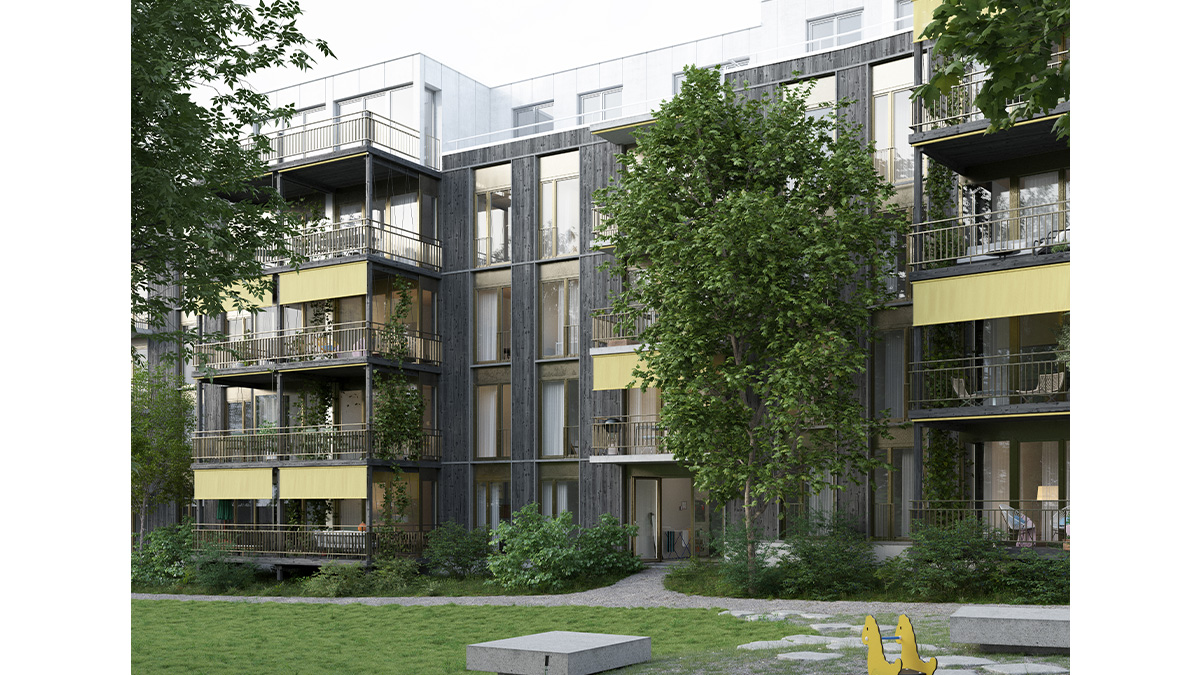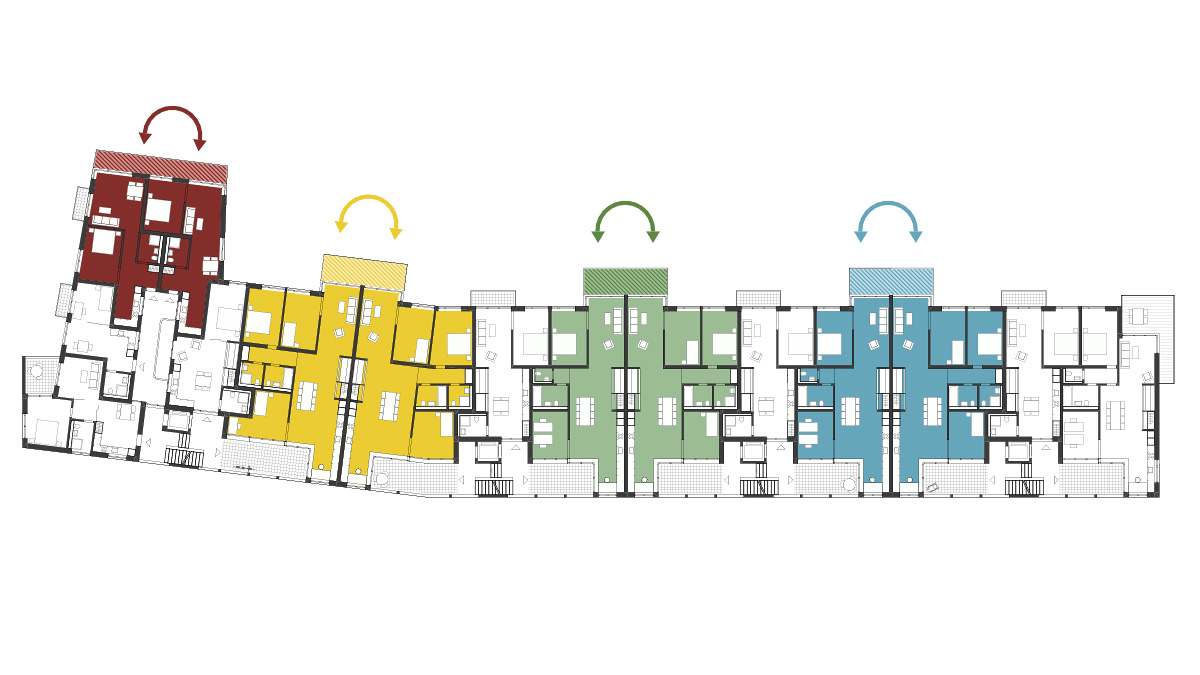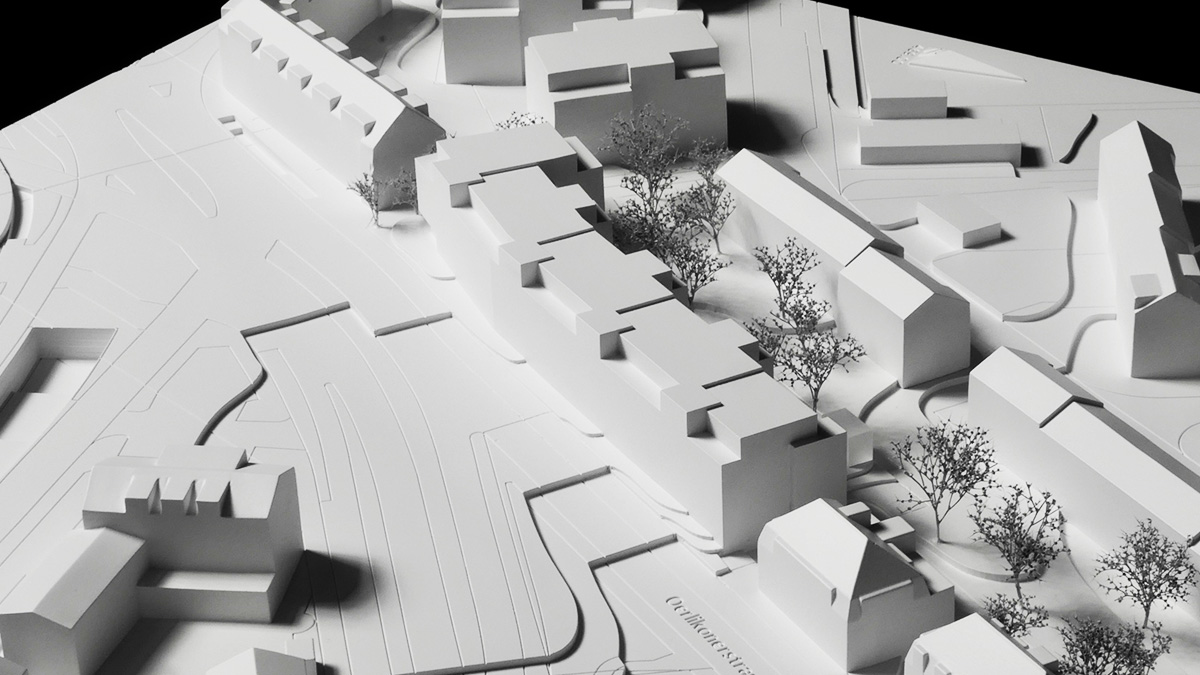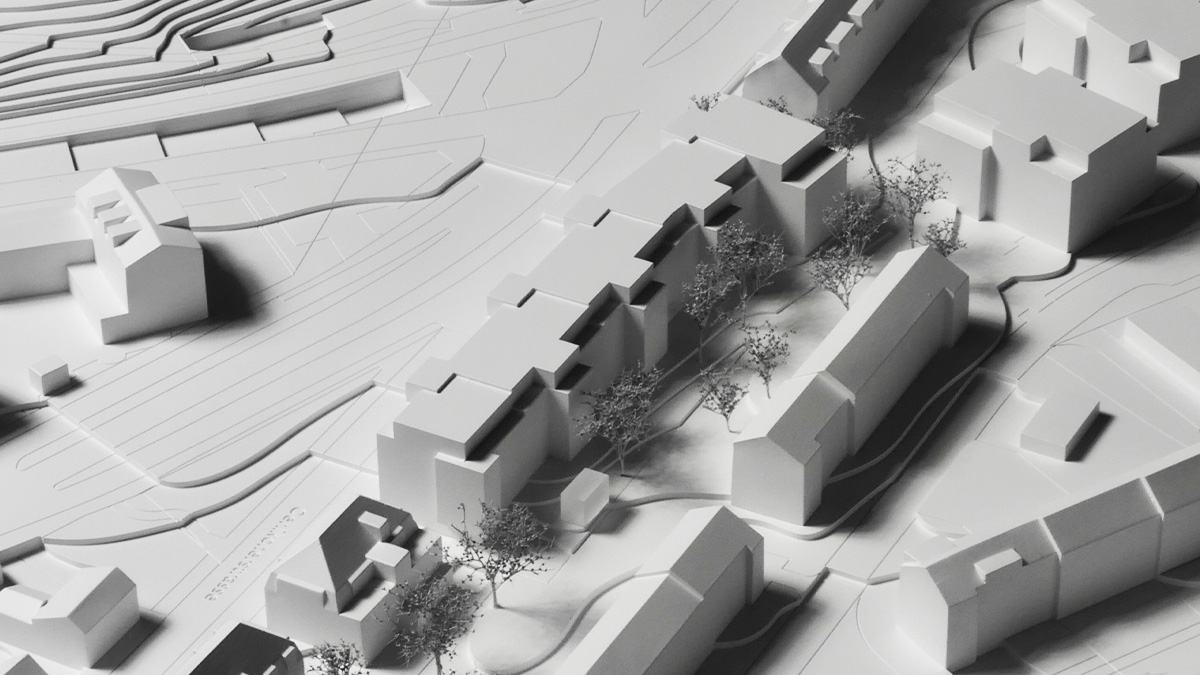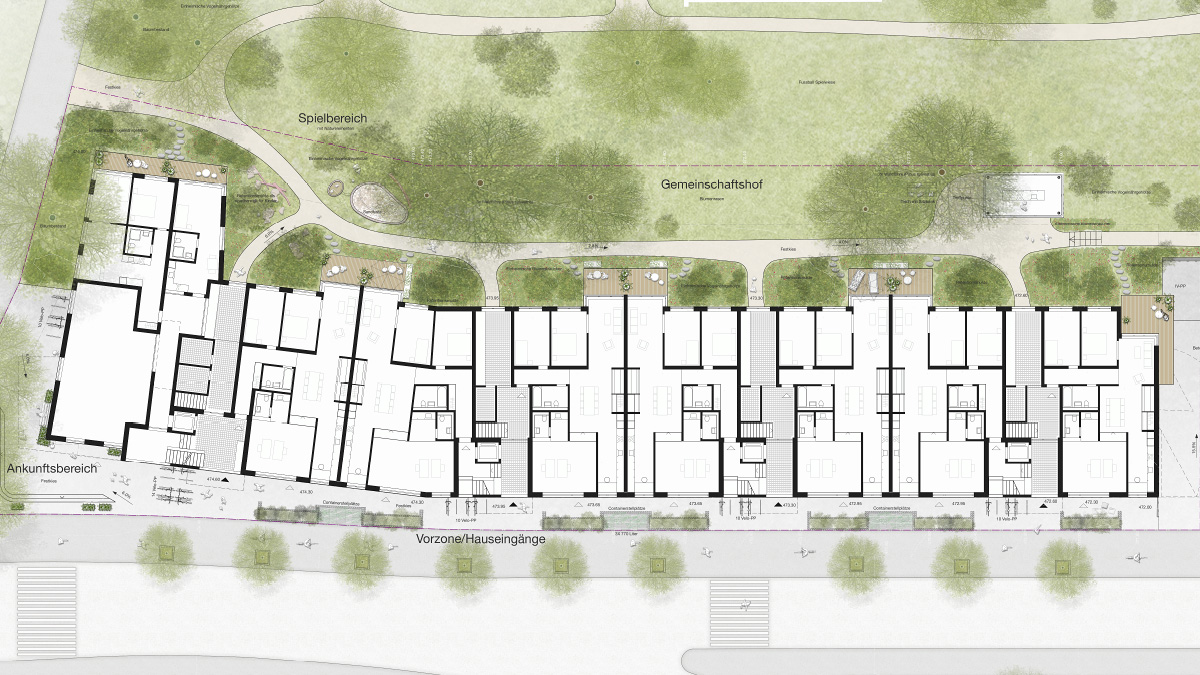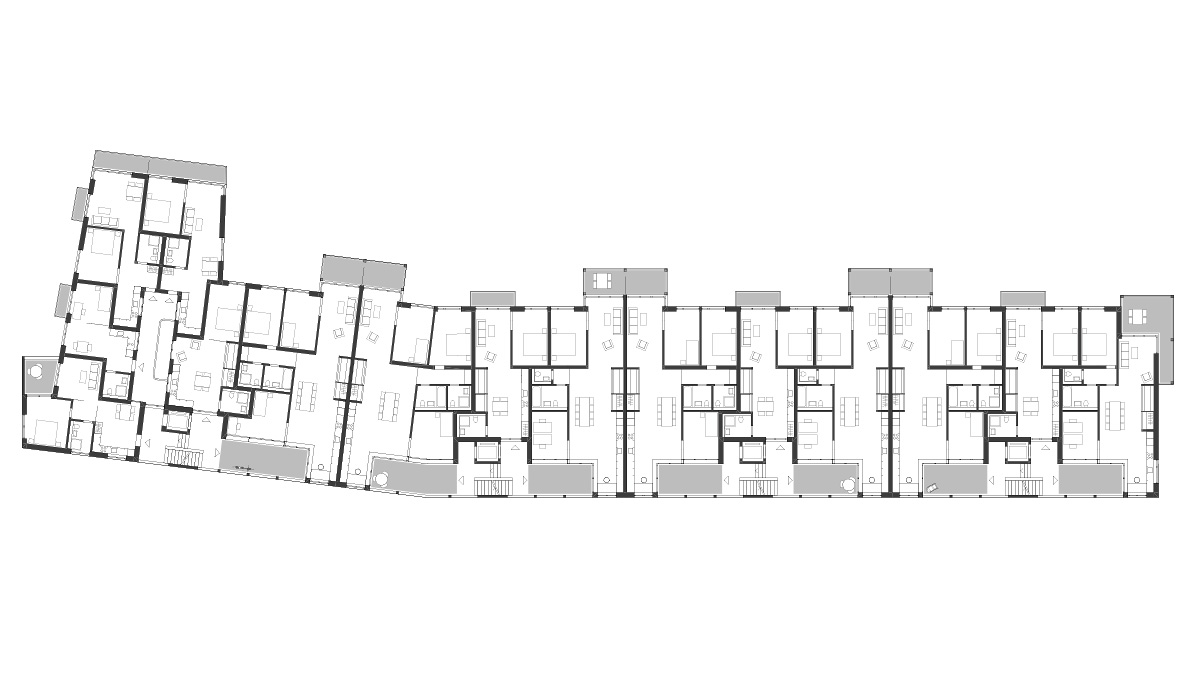Urban development The design on Oerlikonerstrasse is characterised by its different urban sides. The building is stepped down in four sections towards the north. This stepping results in an urban texture that is appropriate to the context. The compact building form provides the necessary protection from the noise generated by Schaffhauserstrasse on the opposite side. Despite the densification (density: 2.3), the inner courtyard retains its character and gains in attractiveness for the entire neighbourhood thanks to the noise protection.
Social sustainability The inner courtyard and the numerous semi-public contact points inside fulfil important criteria of social sustainability as defined by the “Standard Nachhaltiges Bauen Schweiz” (SNBS, Swiss Sustainable Building Standard). By linking the private outdoor spaces to the courtyard and the usable pergolas to the street, meeting zones are created for the residents. They strengthen the sense of community within the building – “people know each other”. Additionally, there is a small communal kitchen on the attic floor, which provides access to a southwest-facing rooftop terrace.
Noise protection The typical floor plans of the standard floors ensure that all rooms meet the values according to ES lll (noise protection standard). The majority of the rooms are orientated towards the courtyard side facing away from the noise. The passage between the dining area and the living area exceeds 1.50 m in each case. The proposed layout of the larger flats (3.5/4.5 rooms) is just as suitable for living communities as it is for families. All flats are lit from at least two sides. The majority of the flats feature private outdoor spaces on two sides. On the ground floor, there are seven studio units and a neighbourhood shop, while on the standard floor the spacious loggias provide good typological noise protection. The floor plans also make it possible to do without supply and exhaust air as a closed system, eliminating the need for horizontal ventilation ducts on the standard floors.
Construction & preservation of existing structures After careful consideration, we propose a new replacement building while preserving the basement. Preserving the concrete structure saves a significant amount of grey energy. This approach eliminates the need for costly excavation and potential expensive ground compaction of the subsoil. The existing above-ground structure will be replaced with a pure timber structure from the ground floor slab upwards. There will be no additional load on the existing foundations compared to the current state, as timber construction is significantly lighter than solid construction (approximately 50%).
